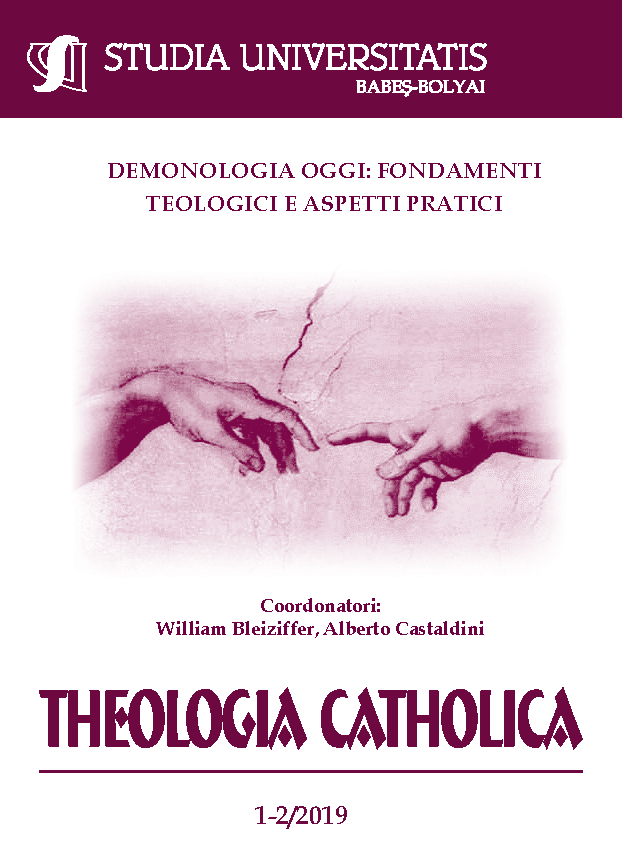RAPPRESENTAZIONI DIABOLICHE NEI LIBRI ROMENI ANTICHI (SECOLI XVI-XIX)
DOI:
https://doi.org/10.24193/%20theol.cath.2019.10Keywords:
woodcut, metal engraving, devil in the guise of a man, dragon, serpent, hybrid animal, Last Judgment, New TestamentAbstract
Diabolical Representations in the Early Romanian Books (16th-19th Centuries). The Early Romanian Books (1508-1830) contain few illustrations, particularly engraved in wood but also in metal, in which one can encounter diabolical representations. It should be pointed out that these images, of which we have selected thirteen revealing ones, can be found in different books and typographical centers in Wallachia, Moldavia and Transylvania. The graphics in the early Romanian writings showed the devil in the human form with horns, but sometimes he was provided with claws, wings and a tail. He also appeared as a serpent, a dragon or as a hybrid animal. Occasionally he was of frightening aspect, with a huge mouth and strong fangs signifying the jaws of Hell in which the damned were driven. The devil was depicted in the compositions The Descent into Hell, The Last Judgment, Adam and Eve, well known themes in European iconography, in St. George Killing the Dragon and in John Climax’s Ladder, subject-matters of special interest on the Romanian territory and in the Balkan area, as well as in some other images.
Reprezentări diabolice în cărțile românești vechi (sec. XVI-XIX). Cărțile românești vechi (1508-1830) conțin foarte puține ilustrații, gravate îndeosebi în lemn, dar și în metal, în care întâlnim reprezentări diabolice. Dintre acestea, apărute în diferite cărți și centre tipografice din Țara Românească, Moldova și Transilvania, am selectat un număr de treisprezece imagini revelatoare. În grafica de carte românească veche, diavolul are aspect de om, dar cu coarne, în afară de care mai poate avea gheare, aripi și coadă. El este imaginat deopotrivă sub formă de șarpe, de balaur sau ca animal hibrid. În unele cazuri, gura imensă a monstrului, cu colți puternici, larg deschisă, semnifică gura iadului, gata să înghită păcătoșii. Pe diavol îl întâlnim în compozițiile Coborârea la iad, Judecata de apoi, Adam și Eva, teme foarte cunoscute în repertoriul iconografic european, în contextul unor subiecte îndrăgite în arealul românesc și zona balcanică: Sfântul Gheorghe omorând balaurul, Scara lui Ioan Climax, cât și în alte imagini.
Cuvinte-cheie: xilogravură, gravură în metal, diavol sub aspect de om, balaur, șarpe, animal hibrid, Judecata de apoi, Noul testament
Downloads
Published
How to Cite
Issue
Section
License
Copyright (c) 2019 Studia Universitatis Babeş-Bolyai Theologia Catholica

This work is licensed under a Creative Commons Attribution-NonCommercial-NoDerivatives 4.0 International License.





 ©Studia UBB Theologia Catholica. Published by Babeș-Bolyai University.
©Studia UBB Theologia Catholica. Published by Babeș-Bolyai University.